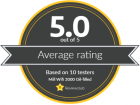Are you ready for Artificial Intelligence?
Artificial intelligence (AI) and chatbots like GPT-3, are rapidly changing the way that businesses operate, including the purchasing function in the consumer electronics industry. In the coming years, we can expect to see a greater emphasis on these tools in the purchasing process, as they offer a number of key benefits for purchasers. However, it’s important to note that there are also potential threats to be aware of. In this article, we’ll take a look at how AI and chatbots like GPT-3 will influence the purchasing function in the consumer electronics industry in the coming years, what benefits these tools offer for purchasers, and what potential threats to keep in mind.
First, let’s consider the benefits of using AI and chatbots in the purchasing process. One of the main benefits is that these tools can help to automate and streamline many of the repetitive and time-consuming tasks that are typically associated with purchasing. For example, chatbots can be used to automatically answer customer questions, provide product recommendations, and even place orders. This can free up time for purchasing managers to focus on more strategic tasks, such as identifying new suppliers and negotiating better deals.
Another benefit of AI and chatbots is that they can help to improve the accuracy and efficiency of the purchasing process. For example, chatbots can be programmed to analyze large amounts of data and identify patterns that can help to predict future demand. This can help purchasing managers to make better-informed decisions about what products to buy and when. Additionally, chatbots can also be used to automate and speed up the approval process for purchase orders, reducing the risk of delays and errors.
Furthermore, the use of AI and chatbot can also greatly enhance the communication with suppliers and customers. AI like GPT-3 can generate more accurate and informative product descriptions, descriptions will be more detailed and could include technical specifications, features, and video demonstrations. As a result of this, AI-generated descriptions, customer support service levels would increase and there would be less of a need for human interaction. This will help to improve the overall customer experience and increase the chances of successful sales.
However, there are also potential threats to be aware of when it comes to using AI and chatbots in the purchasing process. One potential threat is that these tools could lead to increased security risks. For example, hackers could target chatbots to steal sensitive information or place fraudulent orders. Additionally, chatbots can be programmed to manipulate data, this could lead to incorrect purchase decisions or even products that are different than the ones requested.
Another potential threat is that chatbots and AI could lead to job displacement. As these tools become more sophisticated and capable of automating more tasks, there may be less need for human employees in the purchasing function. This could lead to a loss of jobs and could negatively impact the economy.
Finally, as AI becomes more prevalent in consumer electronics, it’s also likely that product descriptions and presentations will change. Product descriptions will become more detailed and include more technical information, such as features and specifications. Additionally, AI-generated product demonstrations and visualizations may become more common, allowing customers to see products in action before they buy.
Overall, the use of AI and chatbots like GPT-3 in the purchasing function of consumer electronics is a rapidly growing trend that offers a number of key benefits for purchasers. However, it’s important to be aware of the potential threats that these tools can pose, and to take steps to mitigate them. As the purchasing function continues to evolve in the coming years, we can expect to see greater emphasis on the use of AI and chatbots to improve the accuracy and efficiency of the purchasing process, with a change in the way product descriptions and presentations are designed.




